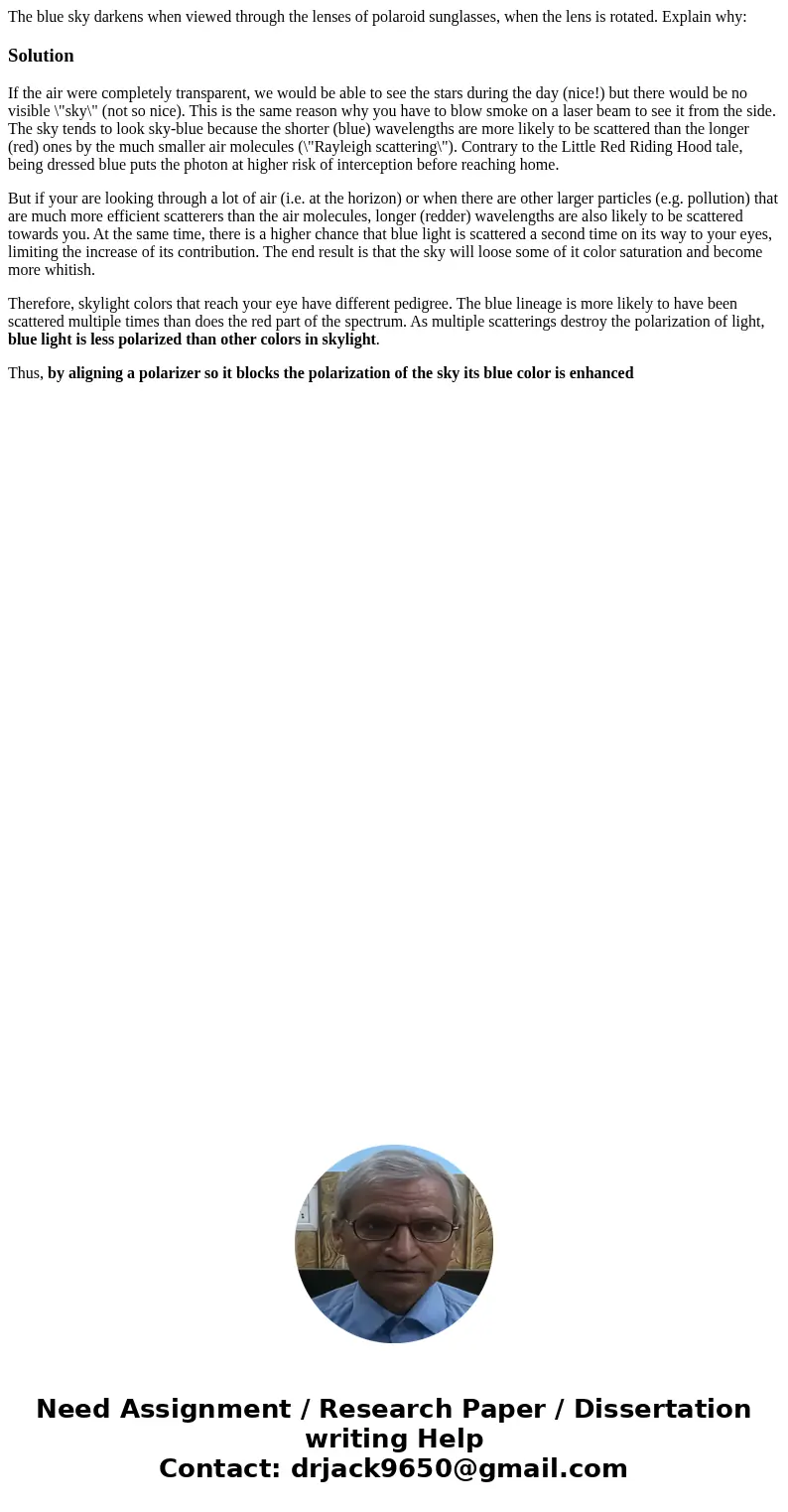The blue sky darkens when viewed through the lenses of polar
Solution
If the air were completely transparent, we would be able to see the stars during the day (nice!) but there would be no visible \"sky\" (not so nice). This is the same reason why you have to blow smoke on a laser beam to see it from the side. The sky tends to look sky-blue because the shorter (blue) wavelengths are more likely to be scattered than the longer (red) ones by the much smaller air molecules (\"Rayleigh scattering\"). Contrary to the Little Red Riding Hood tale, being dressed blue puts the photon at higher risk of interception before reaching home.
But if your are looking through a lot of air (i.e. at the horizon) or when there are other larger particles (e.g. pollution) that are much more efficient scatterers than the air molecules, longer (redder) wavelengths are also likely to be scattered towards you. At the same time, there is a higher chance that blue light is scattered a second time on its way to your eyes, limiting the increase of its contribution. The end result is that the sky will loose some of it color saturation and become more whitish.
Therefore, skylight colors that reach your eye have different pedigree. The blue lineage is more likely to have been scattered multiple times than does the red part of the spectrum. As multiple scatterings destroy the polarization of light, blue light is less polarized than other colors in skylight.
Thus, by aligning a polarizer so it blocks the polarization of the sky its blue color is enhanced

 Homework Sourse
Homework Sourse